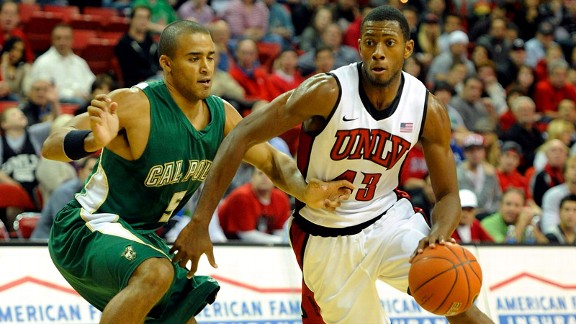College Sports Needs To Rethink Its Leadership Structure
Posted by Chris Johnson on June 7th, 2013Chris Johnson is an RTC Columnist. He can be reached @ChrisDJohnsonn.
The relationship between the NCAA and the schools it governs has grown more tense and distrustful over president Mark Emmert’s tenure. This is a simple observation – anyone who watches, reads or writes about college sports can’t go more than a few weeks without catching wind of some new bureaucratic squabble. But without digging deep and realizing the systemic disconnect that defines the relationship between the NCAA and the people its rules actually affect, it is impossible to comprehend just how incompatible the organization has become with everything college athletics, and their place within the larger academic missions of their respective universities, should be. Outgoing North Carolina Chancellor Holden Thorp’s comments Thursday upon leaving his post at UNC and moving on to D-III Washington University in St. Louis get at the core of what has been the NCAA’s most glaring issue under Emmert (and even before that): Sports people aren’t making sports decisions. People in academia are.

Being a president at a high major university means getting involved with important matters better-reserved for more qualified athletic department officials. Thorp saw the need for a redistribution of power, and resigned from his position to avoid further consternation (AP).
“Either we put the ADs back in charge and hold them accountable if things don’t work,” Thorp said in April during a campus forum, “… or let’s be honest and tell everyone when we select (presidents) to run institutions that run big-time sports that athletics is the most important part of their job.”
That sounds crazy, when you really think about it. Proposals to change inane bylaws and recruiting restrictions and scholarship limitations are being voted and ingrained into the NCAA’s rulebook by high-brow yes-men, the type of people who get up on stage at an athletic council meeting, get cozy behind a microphone and insolently mock everything from entire athletic conferences to religion stereotypes to individual coaches. College presidents, powerful leaders with academic backgrounds, are the ones taking the reins on the same issues athletic departments and coaches spend months and years wringing their hands about. If this presidential control model seems insanely ill-fitting, or just plain dumb, blame the Knight Commission on Intercollegiate Athletics, a group founded in the early 1990s to address the growing unease among educators of athletic departments’ lax enforcement of rule and regulations. Their solution – such as it was – was to hand control to the presidents and chancellors, esteemed educators with no specific experience dealing with the dizzying complexities of college athletics. The leaders of massive public universities would work with the NCAA to come up with reasoned solutions on how to address the problems athletic departments let linger far too long. ADs and other athletic department officials had it all wrong. Let’s hand this over to the presidents. They’re smart, right? They can handle this. They know exactly what they’re doing.


















































